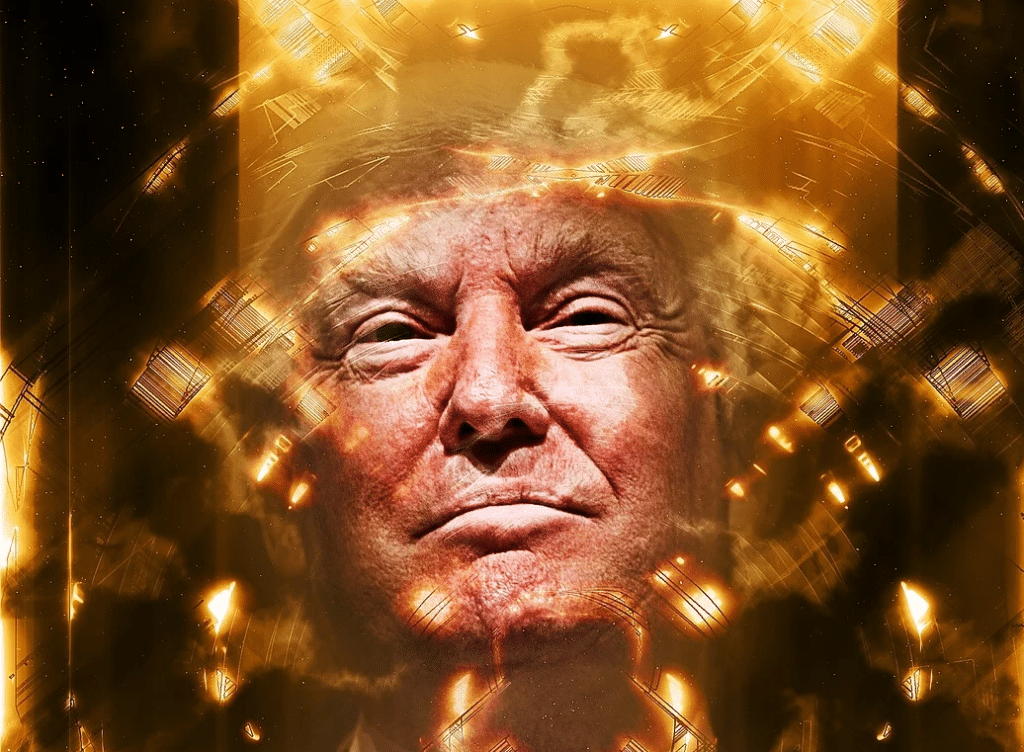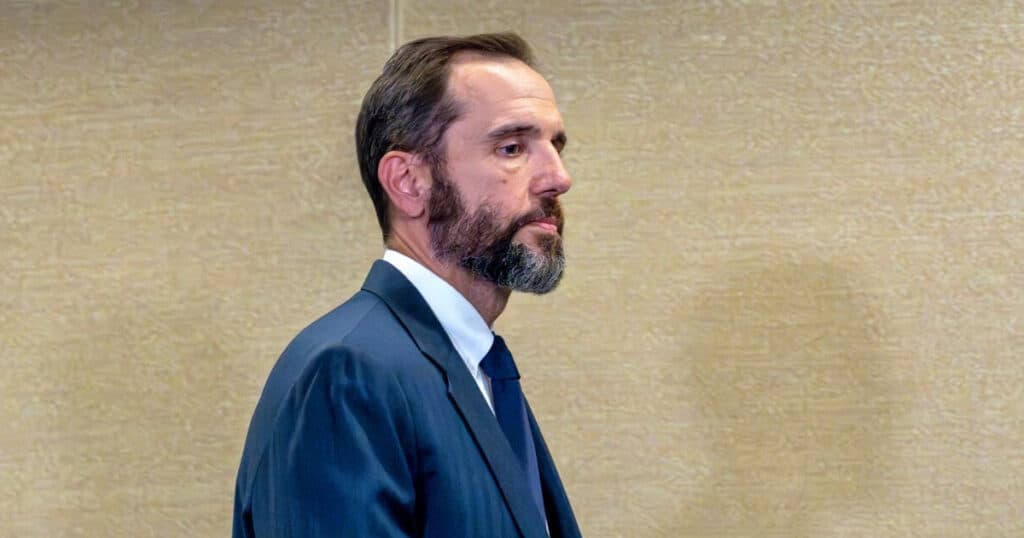
It’s Time To Stop Dismissing All Trump Supporters As ‘Far-Right’
Laziness can be blamed on the overuse of just about any term in politics.
Few other terms are as carelessly thrown around than “far-right.” It’s often used to describe factions of Republicans and members of other rightward activist groups who reject GOP and “Movement Conservative” orthodoxy in favor of a more stringent following — such as with devotees of Donald J. Trump.
But be they Trumpers, or rank-and-file Populists who aren’t married to the Republican label, they may not be actually any further to the political right than a conservative with even the most basic understanding of original sin and the Laffer Curve. In some ways, according to an increasing number of observers, MAGA supporters are not nearly as pro-small government, pro-religious liberty, or anti-tax as their counterparts on the right.
In a surprising number of ways, MAGA may even be more moderate. Is it, then, fair to automatically dismiss their passion as evidence of polarization? Hardly.
A columnist for The Hill had a clever take on the early ’90s slogan “It’s the economy, stupid” to explain the MAGA movement’s continual appeal to certain sectors of the electorate. “It’s the culture” for them.
“Trump is a populist, and populism thrives on resentment,” wrote Bill Schneider. “It comes in two varieties. Left-wing populism is economic; it’s driven by resentment of the rich. Right-wing populism is cultural; it’s driven by resentment of the educated elite. Both forms of populism are class-based, that is, concentrated among voters with lower incomes and lower education.”
Whether that’s a fair assessment or not, one cannot deny Trump’s promise to “drain the swamp” and expose the Deep State appealed to a wide swath of post-Watergate Americans furious with the hubris of modern leadership. That he followed through with it scared the well-creased slacks off of the academic and ruling elite and the mom jeans off certain aging Reaganites who despised Trump’s candidacy from the beginning. Look no further than his judicial appointments to see the multi-generational impact of his (first?) administration and the existential threat it poses to supporters of big government authoritarianism.
Trump embraced a coalition of conservatives on the fringe, most famously the Religious Right which had fallen out of favor since the “compassionate conservative” days. His “one in, two out” approach to federal government regulations earned him support from a broad but often quiet coalition of friends and allies in big business.
But then again, over the course of President Trump’s four years in office, the gross national debt grew from $19.95 trillion to $27.75 trillion — arguably more than George W. Bush and Barack Obama administrations combined. He banned “bump stocks.” He appointed members to the Supreme Court, who revealed themselves to be anything but constructionists in many notable cases. But you won’t hear Nikki Haley or Liz Cheney attack him on these points much because they may largely agree here. They’ll just call him an authoritarian or an “insurrectionist” and be done with their drive-by attacks.
His supporters, not just conservatives but a good share of swing voters or former Democrats, may often favor big-government solutions to cultural problems. Immigration, as one example of where government needs to take a firm (and consistent) hand. And social media regulation as an example of where it perhaps should not. We can argue protectionism versus free trade all day among polite conservative company, as we can Trump’s call for broadband expansion or establishment of the Space Force. Future discussions among NatCon attendees may center around these topics, which may also include the role of NATO in determining U.S. foreign policy. And do we really need a physical border wall?
(Speaking of executive power: Had Trump’s call for a travel ban to and from China had been supported, might America have avoided the full brunt of the COVID-19 pandemic? That question alone makes any criticism of federal policy under COVID pale by comparison with the knowledge that we could have truly slowed the spread with time to better respond. But to his credit Trump did not exceed his constitutional boundaries there.)
Nobody’s perfectly consistent, nor are even conservative heroes of the recent past. Double-R patron Pat Robertson and Mr. Contract With America himself Newt Gingrich both filmed TV spots with former foes vowing to fight climate change and support nationalized health care, respectively. It happens. And we all know how elected Republicans and Democrats alike differ from what their party platforms call for. Demand too much purity and you’ll be a party of one, as the old saying goes.
An enormously flawed WaPo op-ed pointed out that MAGA conservatives are rigid when it comes to criticizing Trump and the issues he has brought to the forefront of American politics. They’ll turn on allies a hair’s breadth away ideologically, even Gov. Ron DeSantis. Their loyalties are to Trump and the platform he sets, not to a certain degree of what is politically “right.”
Any moderate, “establishment,” or skeptical conservative beware: express even the slightest twinge of doubt that the 2020 election was stolen or that Biden isn’t behind a Great Reset and a faction of Trump loyalists will be watching you like a hawk. Many primary battles are being fought over those lines as we speak.
But are those traits examples of rightward alignment along a political spectrum? Reactionary, yes. Loyal, absolutely. Far-right? As was said above, that may not be a fair assessment.
How the Right is defined differs from one political expert to the other. Does a rightward point on the spectrum mean greater support for military authority? Is the left-right paradigm a gage of how one views the proper role of government, with the supporters of a strong, centralized authority in the dead-middle, and varying expressions of liberty on either extreme? It’s all so confusing, and frankly the MAGA movement does not really care. And honestly, most Americans could care less about such political theorizing.
It may be hard to envision now, but there will come a time when Trump will not be the thermostat for a major movement in American politics. His name will not be in the scrolling news ticker of your favorite morning news show multiple times per minute. As Ron Paul boosters eventually dispersed into various facets of the Liberty movement, so inevitably will many Trump followers enter into their own diaspora. But like with former Ron Paul Revolutionaries, Buchananites, or even Ross Perot voters, there are many who will stick around and eventually make peace with the mainstream of the GOP and conservatism and forge new alliances. Those who don’t fizzle out will gravitate to whoever has the more effective solutions to bring America back to her founding principles.
The America First movement and movement conservatism alike have a real opportunity here, especially if Republican gains are made in Congress: come up with actual solutions that work and demonstrate small government at work. Train this new wave of pro-Trump Populists, MAGAs, and former Democrats who walked away inspired by 45. Help them to understand the foundations of what became known as conservatism. Assist them in making the jump from a so-called personality cult to something that will stand for several administrations.
And, yes, bring them even further to the right, especially on federal spending. There’s plenty of room on Make America Great Again red hats for one of Thomas Massie‘s electronic debt clocks.



